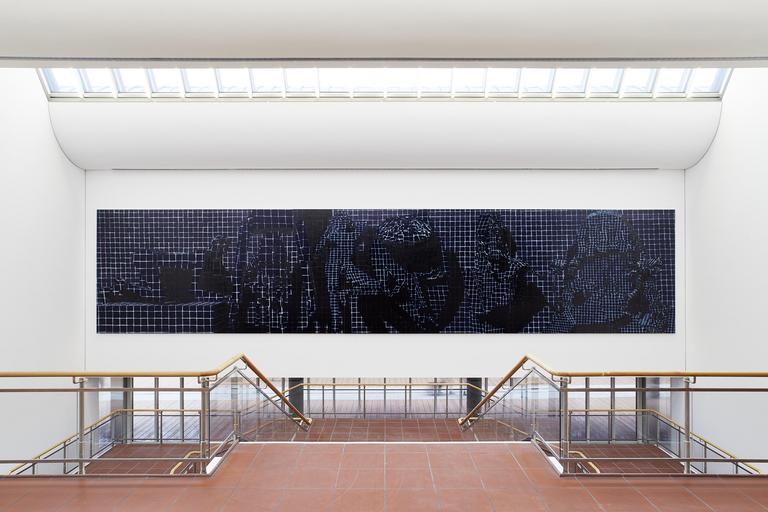
Untitled, 2019
Courtesy: the artist; Kraupa-Tuskany Zeidler, Berlin
Photo: Rheinisches Bildarchiv Köln/Marc Weber
Schultze Projects #2 Avery Singer
For the second edition of the series Schultze Projects, the American artist Avery Singer has created a site-specific work for the stairwell at the Museum Ludwig. The seven-part work is over seventeen meters long and three and a half meters high. The name of the series refers to Bernard Schultze and his wife Ursula (Schultze-Bluhm), whose estate is managed by the Museum Ludwig, and in whose memory every two years since 2017 an artist has been invited to create a major work for the prominent front wall of the stairwell.
Avery Singer (born in 1987 in New York) is known for her large-scale canvases in which she depicts references to art history and clichéd scenes from the cultural milieu, such as a studio visit, a performance, and ideas about the bohemian life of artists. The tableaux, which show arrangements of Constructivist-looking mannequins, have a humorous and dystopian appearance. Some of the figures seem like virtual characters, avatars that have been taken out of art history or the current art world in order to hold a mirror to it. In her current work for Cologne, Singer draws on motifs from earlier works, such as Performance Artists, Happening, Flute Soloist, and Heidiland, whose titles reveal that the subjects come from the broader field of the arts. In their sometimes ironic exaggeration, these pictures demonstrate that neoliberal economization does not stop at studios and museums, and instrumentalizes the ideal of artistic creativity.
In her painting Singer deliberately contrasts sharpness with blurriness, creating atmospheric spaces reminiscent of computer games and other digital contexts. In her painting for the museum, she creates irrational spaces overlaid with grid structures. The combination of different forms and figures, some of which are blurred, creates unclear perspectives and strange shifts in perception. Occasionally there are contradictions of light and shadow, and individual fragments seem to visually emerge from the pictorial space.